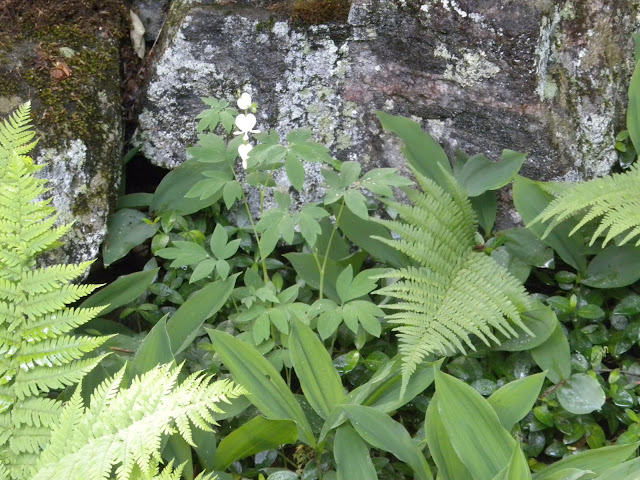At the Ontario cottage a few years ago we had an arborist come to take down a few trees. When he said something along the lines of "If you were managing your forest..."
Ouch. That stung.
What did he mean if I was "managing" my forest? I love my forest. The opportunity to steward a natural woodland property is amazing to me, and I wanted to do everything I should be doing to keep it healthy and happy.
So I researched that winter.
Much of what I found was
designed to teach one how to optimize large acreage for commercial harvesting, but may of the same principles applied to the 100' x 100' forest I have on the other side of our road. Most cottages on the lake do not think of their property on the other side of the road, away from the lake, as part of their cottage. But we sure do. In the spring when cold air blows off the lake and sitting at the water's edge is a chilly proposition
we simply go into the woods where it is sheltered and relax in the sun on boulders enjoying the chipmunks company.
It may seem strange to the infrequent person walking their dog down the road to see us perched up there but we love it.
The forest did not look like a forest; it had a lot of scrub and looked, well, like scrub. "Are there even any trees in there?" you might ask.
It turns out there are.
I feel now like I actually have a proper forest. It is amazing to be able to see back into the woods.
To know that it is
healthier for the remaining trees to have less competition for sun and nutrients makes me feel really good about what I am doing.
In year one, in the spring before the bugs and leaves came out - both of which make it substantially harder to do later in the season - I took to cutting back the smallest scrubby trees. I started with just my hand shears and a pair of loppers. Small trees were gathered up and tossed further back into the remaining scrub to keep the floor 'tidy', after all I need to be able to walk around up there!
 |
| Thinned to the right of the creek but not the left |
In year two I took down anything I could with a hand saw. Good healthy work.
I sheared the tall spindly trees of their thin limbs and stacked them neatly in piles which will be brought down to the fire pit next year after after they have had time to dry out.
I also continued the dry creek bed we had made beside the cottage on the other side of the road. Why not? We certainly had enough stone...
I
did not cut down every small tree. When a sapling was not crowded by its neighbours it was welcome to stay. Nor did I call in a professional to help me identify different trees, which many of the articles I read recommended. To be frank pretty much all of them really were the same.
 |
| Before |
 |
| After |
At the end of the summer last year I took up the chain saw because there are a few too close to one another that were simply too big to cut by hand. Not many, but a few. I did not quite get through them all, but I think you will agree the difference is substantial.
Helping the forest and embracing our property away from the lake - two admirable goals. Pretty flowers are lovely but this work is something that I am particularly proud of and find the results to beautiful in their own way.
















.JPG)

.JPG)
.JPG)























